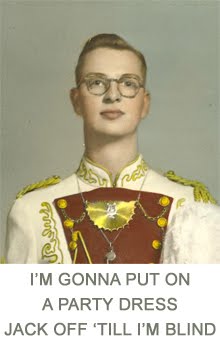
I got sucked in by the trippy cover art smiling enigmatically at me from the shelf of 45s in my local record shop. A gnomic, three-eyed, golden mystic looking out underneath a field of eyes (leaves? paramecium?) that transform into a convulsive wave of moire dots. Also, I'd just finished reading Invented Knowledge, all about fake histories and pseudosciences, and it had a chapter on Lemuria—a "lost" continent supposedly located between India and Australia—so it seemed fortuitous. I'm perfectly OK picking up an album based on its cover, and this one matched perfectly.
Burning Mirrors erupts in a spasm of pummeling drums and bass driving a deeply grooved krautrock beat, like the Silver Apples crossed with Hawkwind. It’s a whirlwind swirl of noise rock and psychedelica that builds up towering layers of whooping incantations, howling organ, and fuzzed-out guitars that quickly saturate all the available psychic space in the room. It’s a total brain melter. They’re getting comparisons to the Black Angels, and although they definitely build analog altars of throbbing reverb, it feels less retro. They’re looser, wilder, more exploratory and way more likely to just start going wiggy all over the place.
The b-side, Chevaux Fous, translates the Osmond’s Crazy Horses into a grinding echo-chamber of siren noise and triple-bad-acid occult freak-outs. They’ve got a full length out now on Knitting Factory Records that you should definitely pick up.
Burning
Burning Mirrors erupts in a spasm of pummeling drums and bass driving a deeply grooved krautrock beat, like the Silver Apples crossed with Hawkwind. It’s a whirlwind swirl of noise rock and psychedelica that builds up towering layers of whooping incantations, howling organ, and fuzzed-out guitars that quickly saturate all the available psychic space in the room. It’s a total brain melter. They’re getting comparisons to the Black Angels, and although they definitely build analog altars of throbbing reverb, it feels less retro. They’re looser, wilder, more exploratory and way more likely to just start going wiggy all over the place.
The b-side, Chevaux Fous, translates the Osmond’s Crazy Horses into a grinding echo-chamber of siren noise and triple-bad-acid occult freak-outs. They’ve got a full length out now on Knitting Factory Records that you should definitely pick up.
Burning

























